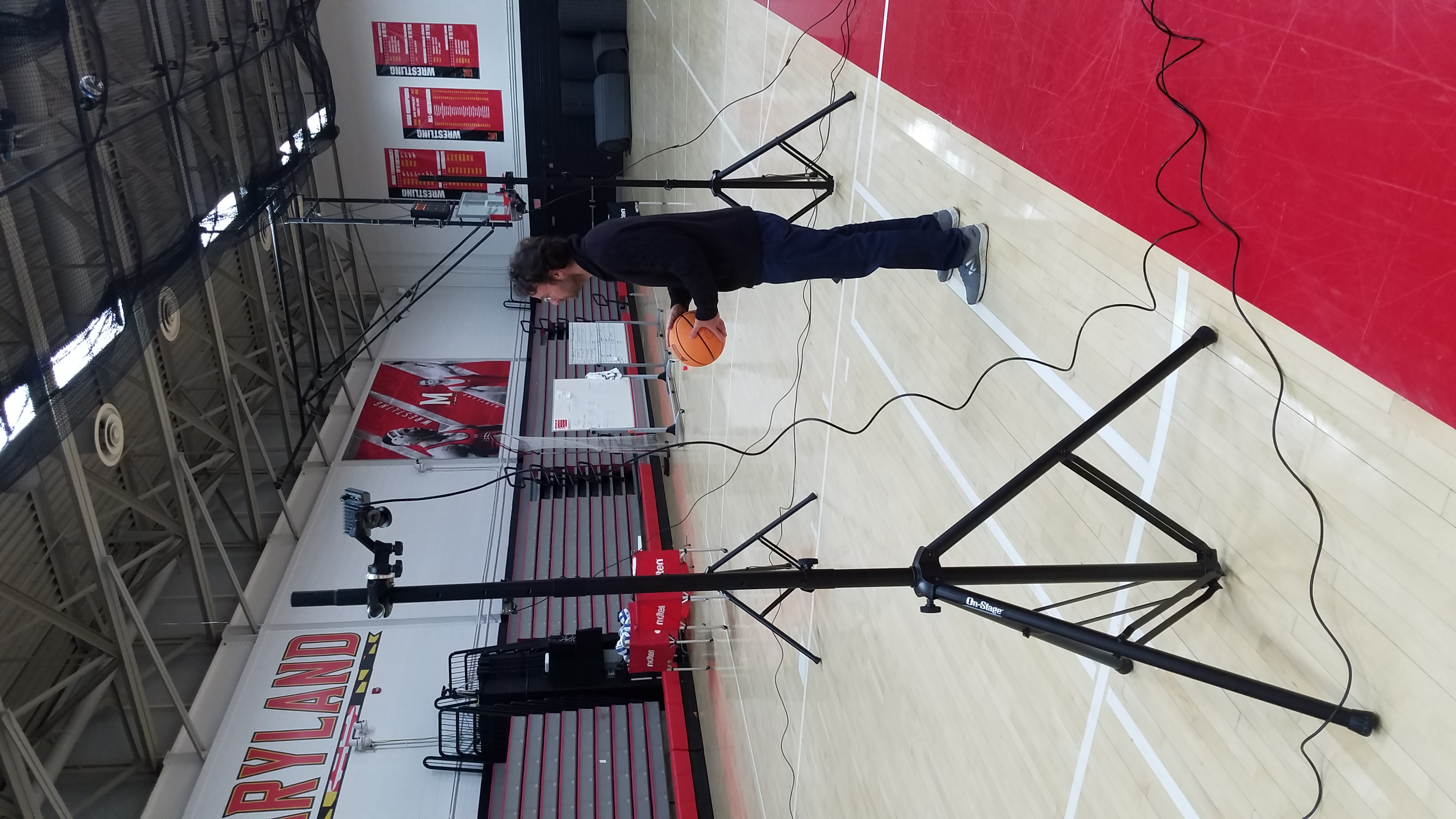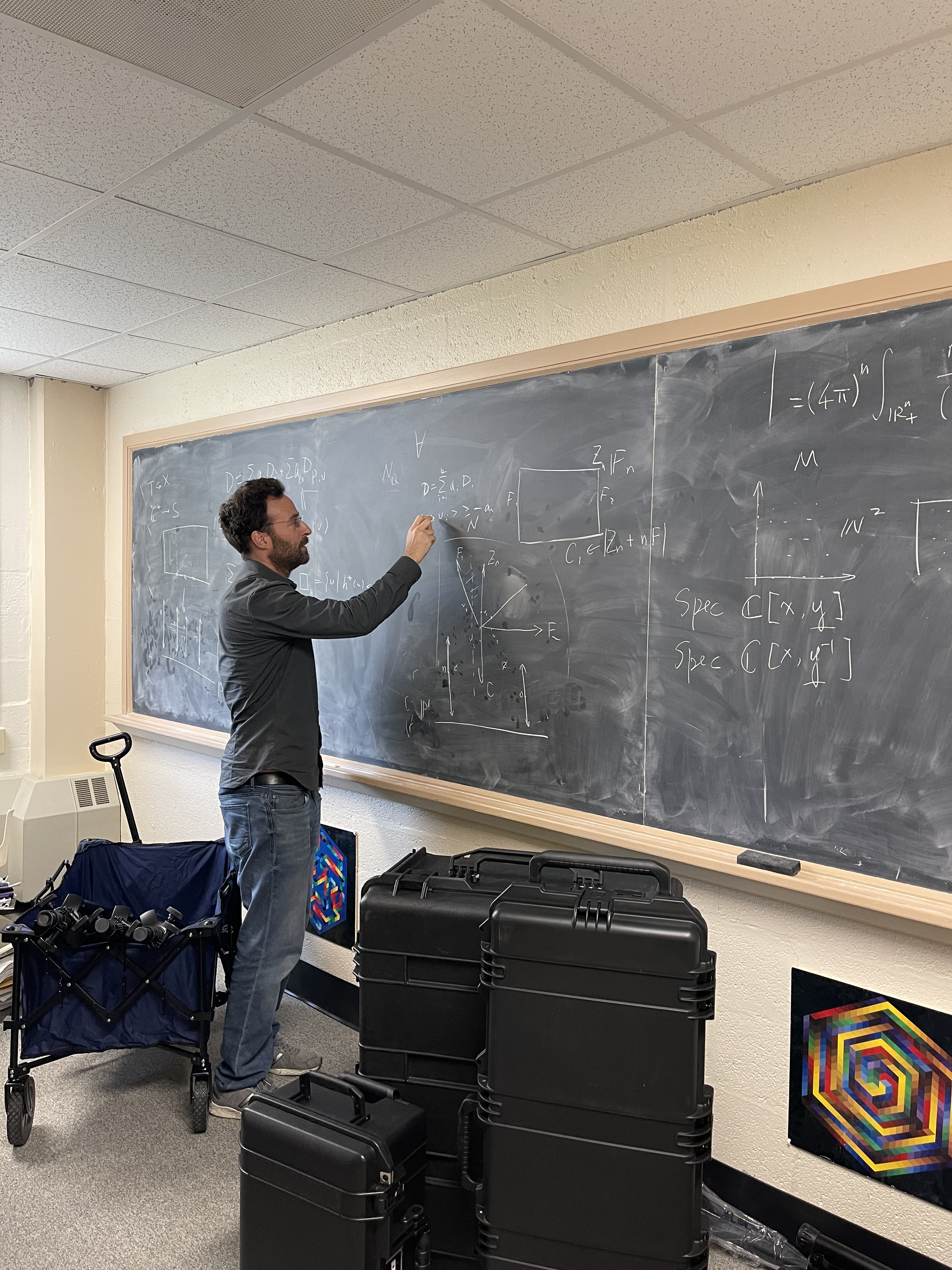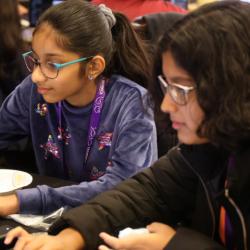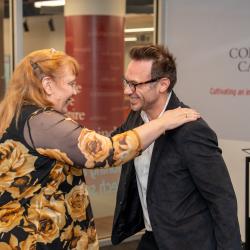Mobile Math: Connecting Students to STEM Through Sports
As part of his Grand Challenges project, Yanir Rubinstein will transport his sports analytics lab to local schools and show students the relevance of STEM to their everyday lives.

This summer, University of Maryland Mathematics Professor Yanir Rubinstein has big plans in the classroom and on the basketball court.
Rubinstein’s plans began to take shape in February 2023 when he received an award from UMD’s Grand Challenges Grant Program, an institution-wide initiative that provides funding for researchers to tackle major societal issues.
Rubinstein will use his award funding to address educational disparities in science, technology, engineering and mathematics (STEM). Rubinstein’s approach is simple and even a little unconventional. He plans to help bridge the educational gap by bringing math directly to students traditionally underrepresented in STEM, particularly minorities and women—not through textbooks or lectures, but in the form of sports analytics and experiential learning.
According to Rubinstein, the idea sprouted from his own passion for sports as an amateur basketball player and sports writer.
“I’m a teacher, so I’m constantly looking for ways to engage students and retain their interest in math,” Rubinstein explained. “And personally, I’ve always been drawn to sports. I played basketball for years and I continue to write about sports even now. I realized that this could be a good way to have students connect math with something they’re already passionate about. Because of this, pairing math and sports just clicked for me.”
A mobile math lab
Although he is primarily a pure mathematician who focuses on more abstract ideas, Rubinstein knew that his desire to directly address societal needs with his skills meant that he would have to investigate more applied forms of mathematics. To prepare for his Grand Challenges project, Rubinstein talked extensively to people in the sports industry to find out how his research could help address their problems and improve overall athletic performance. He quickly realized that his background in optimization had the potential to be immensely helpful in the world of sports.
“We can optimize the way someone throws a baseball after seeing what happens when they move their shoulder or hand,” Rubinstein said. “We can classify these movements using math models and get some insights into how they can improve their performance. And with data we capture through cameras, we can ask—is there a better way of throwing the baseball? Is there a way to position their shoulder or hand to make that perfect throw?”

For his Grand Challenges project, Rubinstein will begin by creating a mobile version of his existing math sports performance research lab. To do that, he plans to scale down his lab’s resources by assembling smaller sets of motion capture tools such as cameras and laptops to transport to local schools. With this portable adaptation of his lab, students will have the opportunity to interact with state-of-the-art software and equipment developed by Rubinstein while learning about sports performance analytics in a hands-on way. Rubinstein also intends to pair the technological features of his lab with a series of bimonthly experiential learning experiences that will help put context behind the numbers and hone the students’ analysis skills. Students will be able to access both the lab and its equipment, as well as the extracurricular course, after their normal school hours.
“The math part of this project involves looking at the relationships between geometry, data and human movement,” Rubinstein said. “The outreach component aims to connect those points to things that high school students can find relatable to their everyday lives—in this case, sports and athletics.”
By partnering and collaborating with local schools and teachers, Rubinstein plans to design a curriculum that showcases the potential real-world applications of math in sports while remaining accessible to students who are relatively unfamiliar or uncomfortable with STEM. He believes this type of early exposure and introduction to STEM will make the subjects less intimidating and could change any pre-existing stereotypes students may have had of math or people who pursue math.
Ultimately, Rubinstein hopes that the mobile math lab and its accompanying course will reach students who are traditionally underrepresented in STEM and inspire them to pursue careers in those fields.
“Applying math to sports will obviously attract student-athletes who want to eventually reach a professional level when they grow up, but we also want to attract students who may not become athletes yet still want to contribute to something they’re passionate about,” Rubinstein said. “Skills like geometrical reasoning, data analysis and a basic understanding of quantitative concepts will be crucial in many career paths.”
Planning for the future
The Grand Challenges funding for Rubinstein’s mobile math sports lab project is expected to continue for the next three years. During that time, he hopes to gradually expand his lab to more schools in the D.C. metro area. This summer, he will begin by assembling the equipment and determining the necessary logistics.
Rubinstein also looks forward to building a team of researchers who share his love for sports and his dedication to addressing the educational disparities in STEM. As part of his recruitment efforts, Rubinstein piloted a new course—called “Experiential Learning: Mathematics of Sports Performance Analytics”—which emphasizes the connections between mathematics, data and sports. The course has so far drawn an eclectic and very motivated audience of students in Spring 2023 and will return in Spring 2024.
“This is an ambitious project and an amazing opportunity to give back to the communities around us, so I welcome any UMD students, faculty and staff who share my passions for sports and inclusivity in STEM to join me,” Rubinstein said. “I also can’t wait to see how the mobile sports lab will grow, thanks to all the students who will have a hand in creating something for their own futures.”







